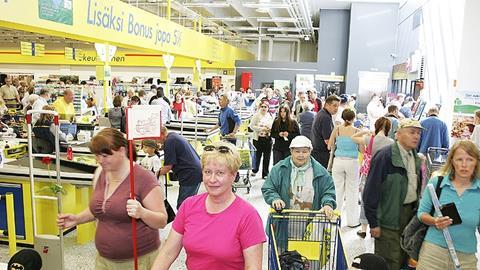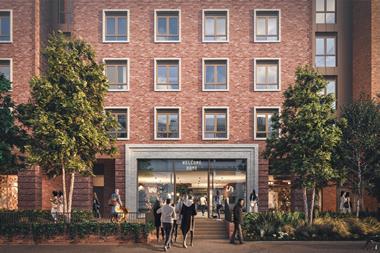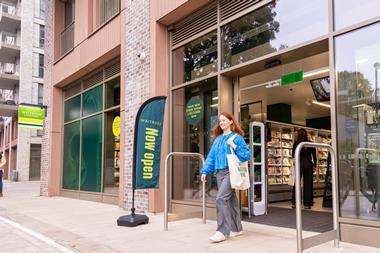Retail is a data-rich business, but in this market it is crucial information gets turned into insight that can be acted upon at the point where it will have the greatest impact, argues Joanna Perry

Exclusive whitepapers for Retail Week readers
- Smart customer centricity: The analytical advantage
- Size Optimisation for Retailers: How to effectively stock sizes of each item in each store – into a profitable advantage
- SAS Solutions for the Grocery Industry
A roomful of retailers was recently told by Google retail industry leader Peter Fitzgerald that statisticians would become some of the most important people in their businesses.
It’s a future many old-school retailers can likely not yet envisage. But the reality is that there is often a gap between the data that retailers can collect and the actions they actually take as a result of the insight they could create.
In such gaps are opportunities to better understand and respond to consumers’ needs, resulting in benefits to retailers’ top and bottom lines. But to identify these gaps, you need people who can turn raw data into answers to questions: not just what happened, but also, why did it happen and what is the best that could happen in the future?
A simple example of this is at Marks & Spencer, where monitoring and analysis of what customers are saying on the web has led to it identifying products it could sell a lot more of (see pIX). On parents’ social networking site Mumsnet, M&S’s bootcut jeans are referred to as “tiny bum jeans” by this engaged internet community, and by tapping into this stream of consciousness, M&S can make better decisions on how it could expand this product line.
Neil Miller, head of Accenture’s CRM practice, says that turbulent economic conditions are making this need for customer insight more important to retailers of all types: “Attitudes, needs and wants have changed wholesale. From a marketing agenda, we are trying to use customer data to find sweet spots and work out how attitudes and values are changing.”
Collect information on the fly
Customer data can be turned into insight to influence both individual customer relationships and used at an aggregate level to spot trends.
SAS head of analytics Laurie Miles says that the use of insight is continuing to evolve: “Five years ago, you might have had information about me, and you could make a hypothesis about what I might buy next, but it was quite static information.”
He continues: “By collecting information on the fly, you can instantaneously make decisions about what to do. If I buy a Beatles album from Amazon, it pretty much instantly will provide offers on other 1960s products.”
Miller adds that customer insight can provide context to other data that retailers already analyse. He gives the example of a mobile phone retailer running at 98.5% availability. Miller says that while this figure might look good, in context it could mean that its top 10 stores are regularly running out of the most popular handsets, and lots of potential customers are left frustrated.
“Most of the data is going to be historical, and that doesn’t capture needs that are unmet,” Miller adds of raw sales and stock data.
One example of a retailer trying to use insight to improve its operation is Waitrose. Miles says that Waitrose is analysing data on a daily basis to make optimal replenishment decisions. “Every day a forecast for each store is produced automatically mid-afternoon and that determines what goes on the trucks that evening. It has led to Waitrose needing to hold 8% less stock, and to 4% less wastage in stores.”
Three pieces of data for every product are used to make the forecast: previous sales of the SKU; the season; and other influencing factors, such as special events happening near the store. Miles adds that grocers are increasingly becoming interested in the weather as a variable when it comes to making and refining their forecasts.
While it is difficult to give return on investment figures for such projects, Miles says that the prizes can run into the millions of pounds, and more fundamentally whether the business will survive or not. “The more the world is changing, the more you need to model the world. You can then test different scenarios to observe potential opportunities or issues,” he says.
For instance, Miles says that while grocers’ online sales are a small percentage of the total at the moment, stress-testing the point that they should change from picking orders from stores to a centralised distribution model is a practical example of how modelling could be used.
Real-time analysis
To turn data into insight, retailers need systems that can collect and analyse data from a variety of sources in real or almost real-time. Miles explains: “As an analyst, I want to start doing my work on a Monday morning, rather than spending Monday to Thursday gathering the data to analyse. Also if your analytics isn’t integrated with your operational systems then you might be too late to make use of the insight it provides.”
Once you have this insight, you then need the operational set-up, flexibility and resources to actually make changes. For instance, if you are going to put new products on the shelves quickly in response to a gap in the market that you have identified, you must be able to quickly train your staff to sell them.
The next leap forwards for retailers will be to turn all the unstructured data that consumers generate into structured data that can also be tied to them, creating a more holistic single view of the customer. One example would be for a customer record to contain details about a review of a product the customer made on a third-party website.
In the past it was prohibitively costly for retailers to try to store and analyse all the data that was available to them. Miller concludes that this cost has come down significantly, but the problem is that they struggle to get the right analytics talent - harking back to Fitzgerald’s point about statisticians.
There is a long way to go before retailers fully utilise the information that is available to them, but a combination of the right technology, right skills and right responses to the insight generated will see them heading in the right direction.
SOK: Using store-specific plans

Finnish grocery operator SOK believes space is the main driver of its supply chain. SOK Grocery Trade director of assortment planning and pricing Ilkka Alarotu says: “How often products are replenished, how many deliveries, and how many items of each product are delivered at a time, the size of our storage facilities, facing levels and out-of-stock levels - it is all dependent on space,” he explains.
The retailer decided it wanted to move to store-specific planograms, from around 1,500 different model planograms that were tailored to different store sizes. Alarotu said that with 800 stores it was clear that staff could not produce store-specific planograms manually. Now 100 pilot stores are up and running with the analytics system from SAS, that allows the creation of store-specific planograms in certain categories. Once all 800 stores have their own planogram for each category, more than 100,000 will need to be produced.
Alarotu believes that SOK is unique in how it is using space planning, and feeding that information back into the supply chain. The retailer analyses data from its membership card to determine factors such as the predominant household size near specific stores. While most of the assortment decisions are made centrally, the space decisions can vary, depending on the customer base and sales patterns of individual stores.
Alarotu says: “We believe that you cannot be a market leader without being a leader in productivity, and we think we will get competitive advantage from this. We believe that this gives us better service for our customers. Out of stocks will go down, wastage levels will go down and the customer will have a better experience.”
The retailer also believes that it can improve collaboration with suppliers by providing them with better information, which will ultimately mean cost savings on what it pays for products.
SOK is now thinking about how, working with SAS, it can introduce store-specific forecasting, so it can predict sales and its replenishment system can fill the right number of facings. More accurate forecasts will allow the retailer to give its suppliers better numbers to work from, so they can plan their operation better and offer the retailer further improved pricing.
Topics
Know your customer, control your business
- 1
- 2
- 3
- 4
 Currently reading
Currently readingFrom insight to action
- 5
- 6
- 7
- 8
- 9



































No comments yet